Politics
What Does a Biden Presidency Mean for the Arts? Here’s Our Guide to What’s Ahead for Trade, Taxes, Small Business, and More
Here's why many in the art world are pleased about the election outcome.
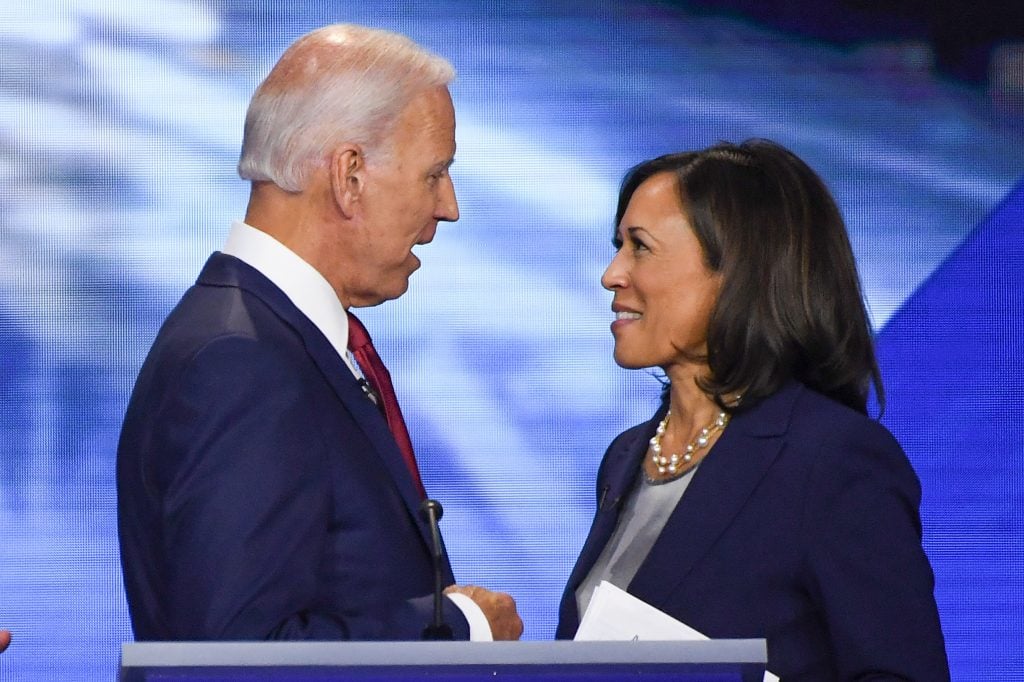
Here's why many in the art world are pleased about the election outcome.

Eileen Kinsella

Despite Donald Trump’s statements to the contrary, Joe Biden has emerged as the winner of the 2020 presidential election. So what will a Biden-Harris administration mean for the prospects of the arts in general, and the art market in particular?
Spirits and hopes are high. “The election was a triumph for our nation and for its progress towards democracy, racial justice, and equity,” says Americans for the Arts CEO Robert Lynch. “We look forward to working with the Biden-Harris administration to support both the nonprofit arts community as well as independent artists working in the growing gig economy.”
Both the former vice president and the former California senator have relatively strong records of supporting the arts. But experts say that it may be too soon to tell how the Biden-Harris administration’s economic policies could impact the market, especially with control of the Senate still in question. With a Republican-majority Senate, many predict there will be few immediate or sweeping changes, which means less market (and art-market) volatility as the country slogs toward the other side of the social-distancing era.
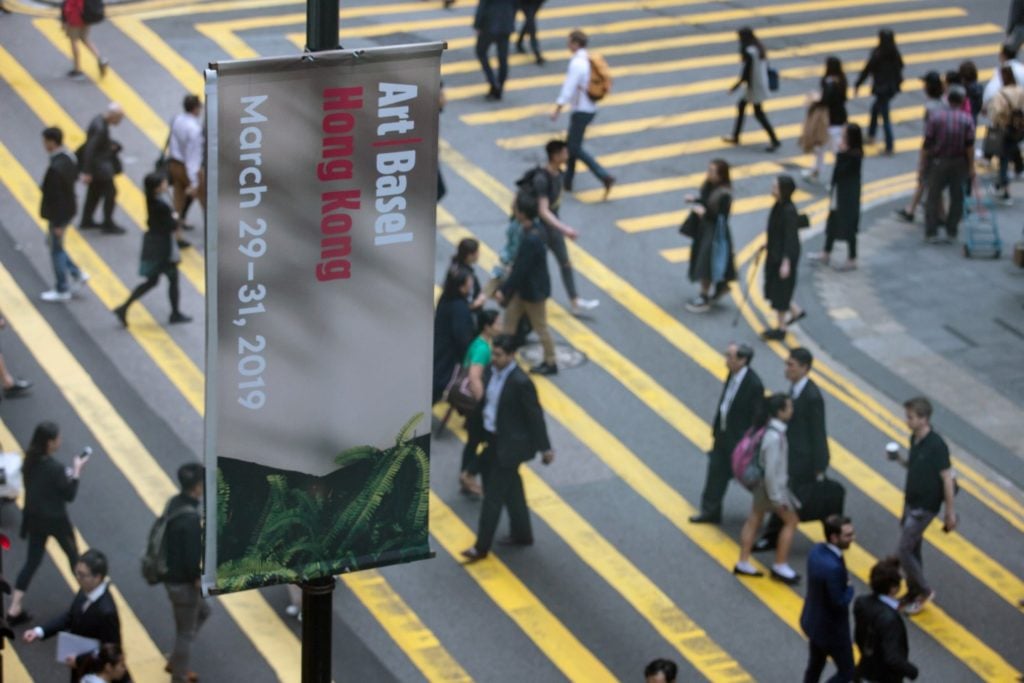
Art Basel Hong Kong. © Art Basel Hong Kong.
“Given the political landscape we are in, this could be a home run for the art market,” said attorney Thomas Danziger, of Danziger, Danziger & Muro LLP.
It helps that the Trump administration ended up being less of a boon to the art industry than some had hoped in light of his pro-business agenda. Popular tax minimization strategies commonly used in the art world were eliminated and replaced with programs that have gained little to no traction, while federal agencies like the National Endowment for the Arts fought merely to survive.
So what does the art world need to know about where we are now, and where we’re headed next? We spoke to experts for the lowdown.
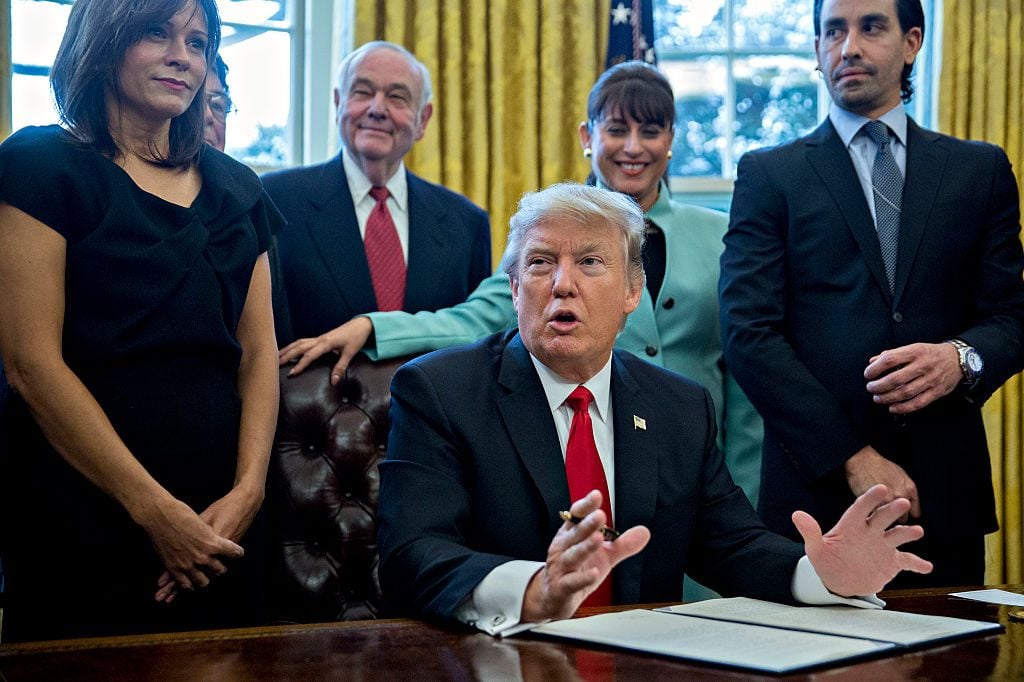
US President Donald Trump speaks before signing an executive order. Photo by Andrew Harrer— Pool/Getty Images.
Where We Were Under Trump: Anyone who doubts Trump’s lack of interest in and support for the arts need look no further than the 2021 budget proposal released this past February, specifically a section titled “Stopping Wasteful and Unnecessary Spending” in which he took aim at the National Endowment for the Arts (NEA), the National Endowment for the Humanities (NEH), and the Institute of Museum and Library Services (IMLS). It’s the fourth time in a row the president has sought to eliminate them.
Where We’re Headed: The NEA and the NEH are likely to be far safer under a Biden-Harris administration. The vice president-elect was among the first to push back when Trump initially threatened to eliminate the agencies. Biden, meanwhile, co-sponsored legislation to establish the National Museum of African American History and Culture in Washington, DC, as well as securing stimulus job funding for arts groups while serving under President Obama.
“We have great hope for a pro-arts administration,“ said Nina Ozlu Tunceli, executive director of the Americans for the Arts’s recently established Action Fund. She plans to push the new administration to include arts organizations in any kind of economic relief package and to ensure they are eligible for a second round of Paycheck Protection Program (PPP) loans.
While the Trump administration was criticized for funneling at least half a billion dollars of small-business bailout money into major corporations, advocates hope the next round will be kinder to small businesses—including art galleries. Tunceli is also pushing to ensure “gig” arts workers are eligible for PPP loans or an extension of unemployment compensation, as they were in the first round.
Where We Were: When President Trump won the election four years ago, even art-world figures unhappy with his win begrudgingly said that his pro-capitalist, pro-business policies might be a boon to wealthy collectors in search of tax avoidance or tax minimization strategies—particularly since the capital gain tax rate on art sales remained high, with a maximum of 28 percent.
Instead, the opposite happened. In early 2019, a popular tax loophole known as the 1031 “like-kind” exchange, commonly used by dealers and traders to delay tax burdens on hefty purchases, became no longer eligible for art deals. (Notably, the push to close that loophole began under the Obama administration.)
At the time, the Trump administration pledged that savvy investors would be able to gain similar tax advantages through so-called “Opportunity Zones,” which came into effect in late December 2017. These zones are economically distressed communities where new investments would be eligible for preferred tax treatment. (Park the funds from your Picasso sale in an opportunity zone, for example, and delay paying tax.) To date, however, there is little talk—or apparent art-world use of—these complicated and poorly defined and managed initiatives.
Where We’re Headed: While no one is suggesting that a Biden presidency would even think about reinstating a generous tax break for wealthy collectors (particularly since the Obama administration supported its elimination), experts say they don’t anticipate any dramatic further change with respect to collectors’ tax strategies. Plus, if the Senate keeps a Republican majority (something that will be determined through runoff elections in January), a sweeping blue wave-style tax hike is unlikely.
“A Biden win with a Republican senate majority would make it difficult for Biden to push through any immediate changes affecting the art market,” says attorney and art law specialist Diana Wierbicki of Withers. “We need to wait and see what happens in the Senate.”
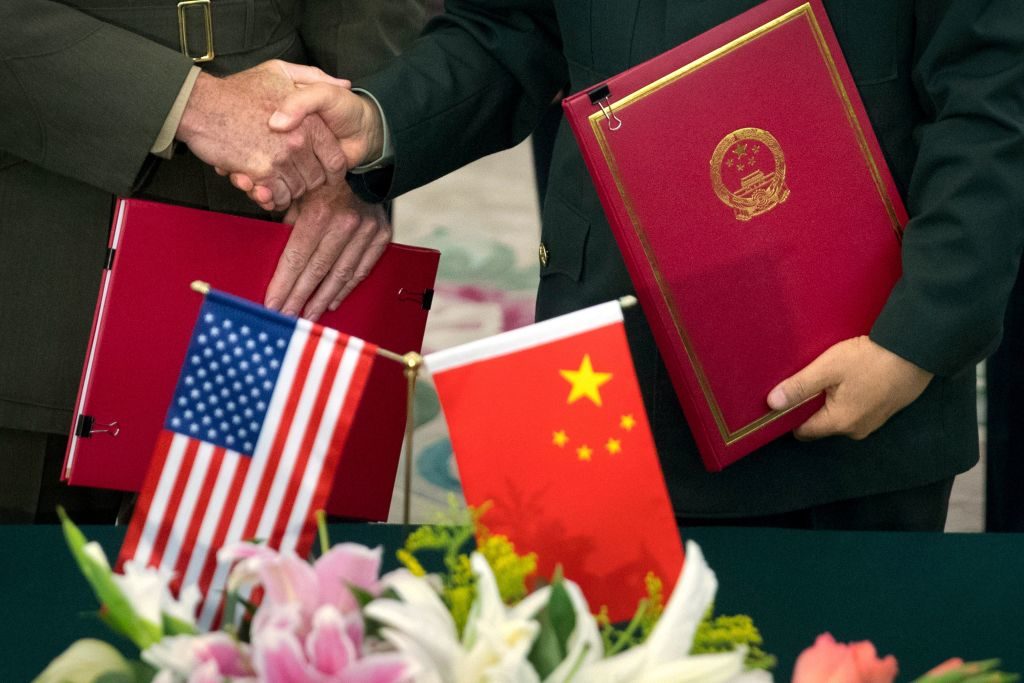
The Trump administration imposed fresh tariffs on Chinese goods on Monday. Photo: MARK SCHIEFELBEIN/AFP/Getty Images.
Where We Were: Many of the roadblocks that cropped up for dealers and art buyers under the Trump administration were not particularly art-specific to begin with. Dealers of Chinese art and antiquities found themselves caught in the middle of Trump’s trade war with China. A hard-won temporary exclusion of the tariff expired on September 1, when sculpture, engravings, prints, collages, and antiques became subject to a 7.5 percent tax upon import to the US. (An exemption for paintings remains in place.)
There were even more unexpected taxes resulting from other trade disputes. Take, for instance, a 25 percent tax hike on contemporary photos, prints, and lithographs imported from the UK and Germany that was levied “as part of the [US] government’s large civil aviation trade dispute with the European Union,” according to the Office of the US Trade Representative.
Where We’re Headed: Experts predict the tariffs will not quickly or easily vanish as soon as Biden enters the White House. The thinking is that they won’t disappear at all without the US getting something in return. But the situation may nevertheless be calmer and easier to plan for under the new regime.
“At a minimum, I think you would say that it’s unlikely they go up from here,” says Ben Mandel, a global strategist at JP Morgan Chase. “We’re not blind to the fact that there is a strategic rivalry between the US and China that’s not going away no matter who is in the Oval Office, but the instruments being used to affect that rivalry are going to be very different.”
What is more likely, Mandel notes, is that the art market will be able to fly under the radar in a Biden administration. “The art market has a lower probability of being swept up in policies pertaining to the administration’s priorities as it did over the last few years,” he says.
Where We Were: From minimizing the seriousness of the virus at the start to flouting mask-wearing and other protective measures, the Trump administration’s response to the public-health crisis has been widely regarded as disastrous. The results have been felt within every segment of the economy, including the art market, as art fairs around the globe were cancelled, major estates were withheld from the auction block, and sales totals fell dramatically year over year.
Where We’re Headed: Within days of being named President-elect, Biden announced members of a new task force comprised of respected medical and infectious disease experts (with, oddly, not one family member on the list!). That’s good news for the entire economy: a vaccine, therapeutic drug, and decreased infection rates are essential for any return to normalcy.
“The focus on restoring activity in those impaired parts of the economy is exactly when the next upswing in the art market is going to take place,” Mandel says. “Normalization of the economy and the broader art market are going to be very much part and parcel.”
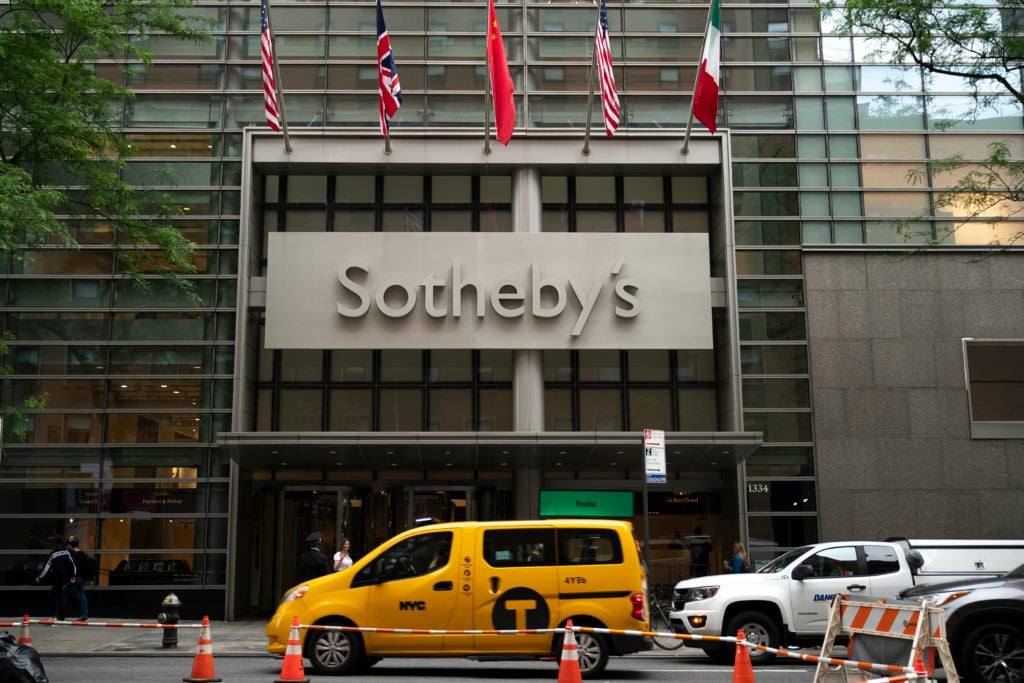
Sotheby’s headquarters on the Upper East Side of Manhattan. (Photo by Drew Angerer/Getty Images)
According to one recent analysis, since April, the wealth of US billionaires alone has increased by at least $845 billion during the first six months of the lockdown era. Experts say the uptick in wealth paves the way for more buying and a more robust market.
“In any society, when the wealthy have amassed sufficient wealth, they become art lovers,” says attorney Michael McCullough, a partner of specialist firm Pearlstein McCullough. “For the past decade, the global economic system has created great concentrations of wealth which have been the driving factor in the expansion of the US art market.” (In other words, growing inequality may be bad for humanity, but it’s good for business.)
Danziger concurs, noting that a Biden win, a Republican controlled Senate and “the realistic prospect of a vaccine are a Trifecta for Wall Street—and therefore the art market.”
New York dealer Rob Dimin takes an even broader perspective. There are a lot of unknowns, he concedes, but the hope is that “Biden does calm our country and the world down. A calmer, less volatile world hopefully then translates to a comfort level for people to participate in building art collections.”